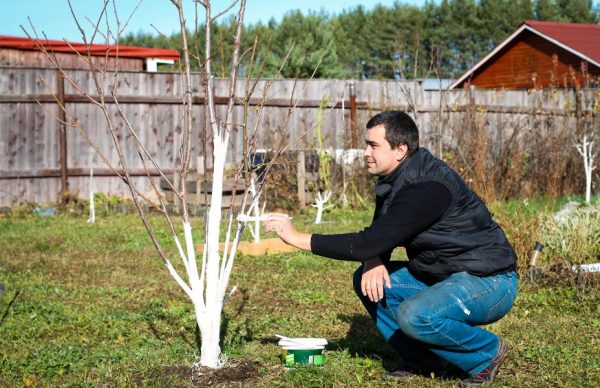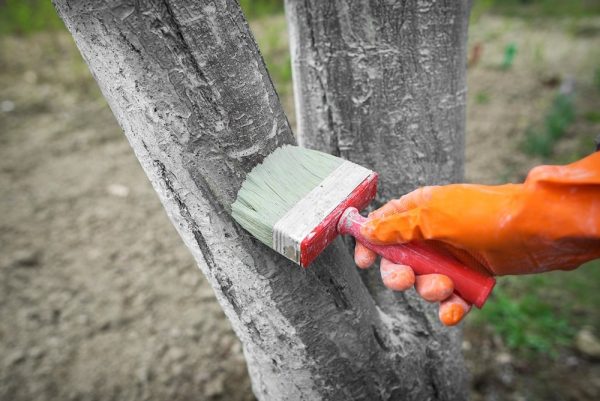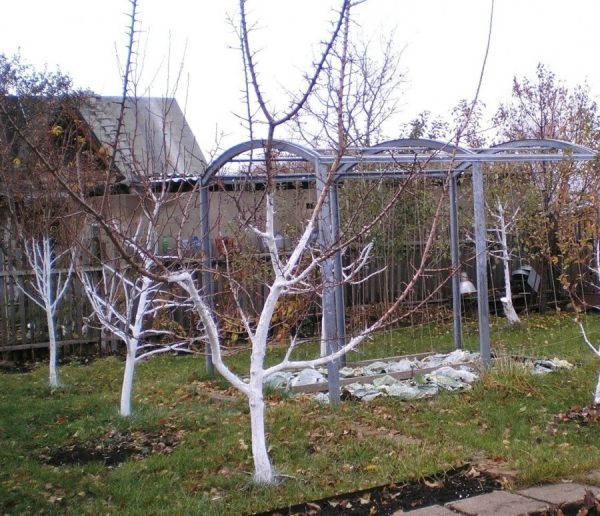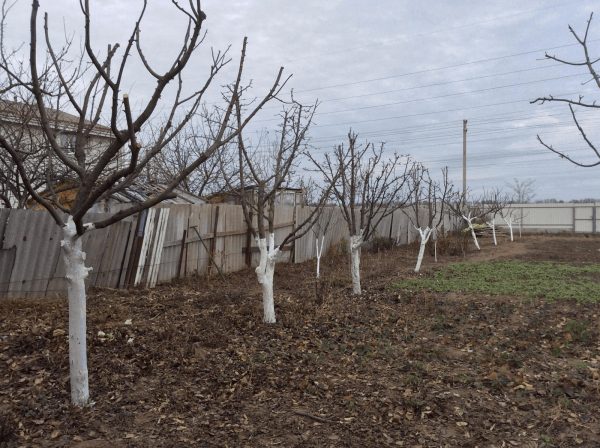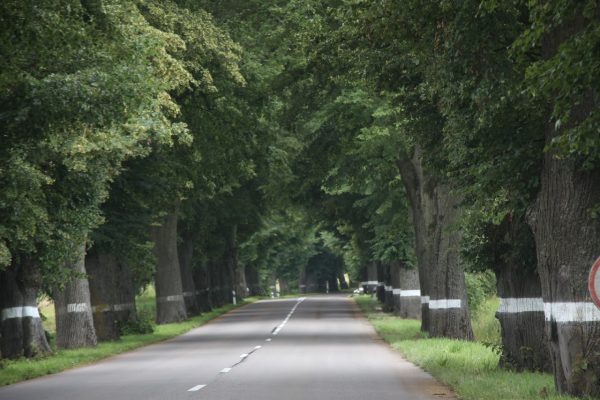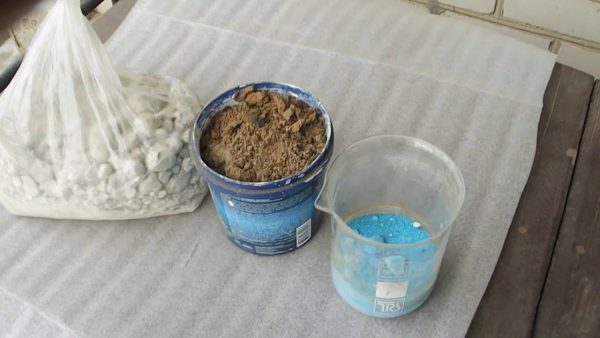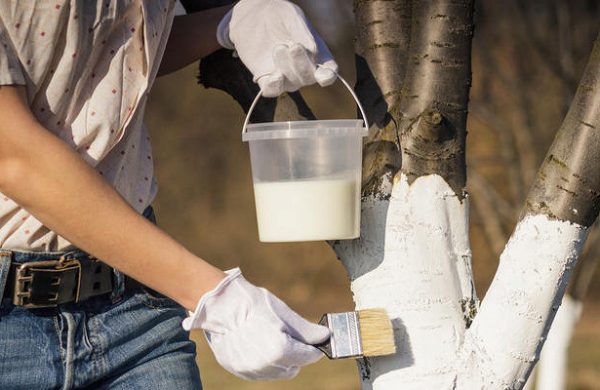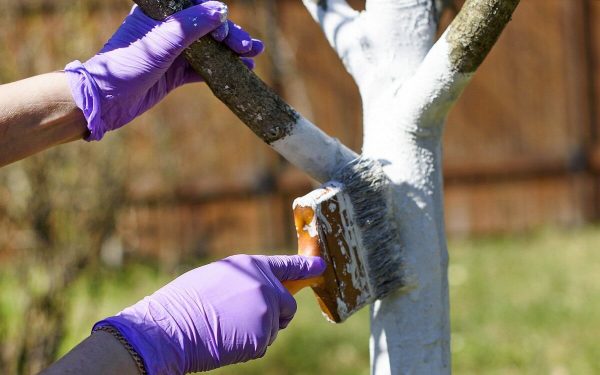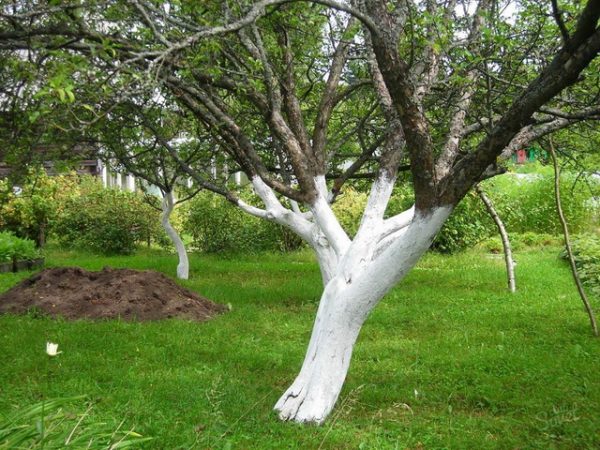Every resident of Russia and the CIS countries knows about the tradition of whitewashing trees, but not everyone is aware of its true goals. You need to understand why you need whitewashing, what function it performs and whether it harms trees. Also, gardeners should understand how often to carry it out, what compounds to use for this and how not to harm young seedlings.
- The value of whitewash for trees
- Pest protection
- Sunburn protection
- Frost protection
- Historical meaning
- Is it worth it to paint young seedlings?
- What is worth whitening?
- Basic Rules
- What is needed for whitewashing?
- Conclusion
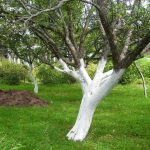
The value of whitewash for trees
Nature is the best friend and ally of all plants on Earth. She endowed the trees with a large number of protective functions, thanks to which they awaken from year to year, bloom in lush greenery and give people juicy fruits. But nature cannot protect against all adverse factors.
The bark of trees - their natural skin - has an important protective function. It prevents sap flow, allows nutrients to pass through the trunk and branches to the crowns, fills the tree with life-giving force. Without bark, the plant would quickly fade and dry under the influence of external phenomena.
The whitewashing performed in a quality manner and in accordance with all the rules provides trees with additional protection against 3 main factors:
- Insects and all kinds of parasites.
- Sun rays.
- Freezing.
All three points need to be considered in detail, which will help to understand the painting mechanism and the benefits of processing trees.
to contents ↑Pest protection
A densely diluted lime solution has two functions:
- Clogs parasites that are left to winter under the bark of a tree. During the flowering season, they cannot get out and die as a result, without causing any harm to the tree. We are talking about bark beetles, from which a lot of damage.
- Prevents the penetration of new insects into the bark.
The second function needs to be given more attention. Trees are most often whitewashed in the city, but over the past 20-30 years this tradition has become a tribute to aesthetics and the eternal spring subbotnik. However, those who live outside the city and value their plantations also bleach trees every year.
to contents ↑A layer of lime helps scare away not only insects, but also animals: hares, beavers and others. They do not gnaw the whitened bark, do not disturb the sap flow, and the tree is gaining life-giving strength, blooms, gives fruits and seeds.
Sunburn protection
The rough at first glance tree bark often deteriorates under the scorching rays of the sun, this is especially true for rocks without a fluffy branchy crown that gives a cool shadow.
White color repels the sun's rays in a natural way. As a result, trees with colored stems are perfectly protected up to skeletal branches. They do not receive sunburn even in the summer heat, continuing to grow without complications.
to contents ↑Frost protection
Here we are talking about the formation of frost pits - characteristic longitudinal cracks in the crust. They form during the winter-spring off-season, when the bark warms up to +10 degrees per day, and freezes to -10 degrees Celsius at night. White lime reflects the sun's rays, and the tree normally perceives sudden changes in temperature.
It is worth noting the natural flowering.Practice has shown that buds on whitewashed trees swell and bloom much later, so they are not afraid of sharp spring frosts, which often happen in central Russia.
to contents ↑Historical meaning
It is curious that the whitewashing of trees has a very important role in Russian history. During World War II, they served soldiers and drivers as landmarks at night. White trunks, painted with lime and growing on both sides of the road, could be easily seen in the dark. Thanks to this, the convoys moved forward with the headlights turned off, remaining completely invisible to enemy aircraft.
This practice saved more than a dozen soldiers. It should be borne in mind that in the Soviet years people lived for a long time in fear of war and new invasions. For this reason, all factories could instantly switch to the production of cartridges and shells, in residential buildings there were always bomb shelters with a supply of provisions, and the trees along the roads were still painted white for night landmarks.
to contents ↑Is it worth it to paint young seedlings?
Young trunks are especially vulnerable to the factors discussed above, and they must be painted. But here you must be extremely careful:
- a concentrated lime solution can burn young and thin bark and create a tight layer that will slow down and disrupt seedling growth;
- insufficiently saturated mixture will not bring any effect.
It is necessary to stop at the golden mean. If you decide to do whitewashing on your own, then seek help from experienced gardeners. On the Internet you can find many forums with useful recommendations.
to contents ↑
What is worth whitening?
This is an important nuance. Traditionally, whitewash uses a solution of slaked lime and water, which is diluted in proportions:
- lime (fluff) - 2–2.5 kg;
- water - 10 liters.
To achieve the optimal effect, you can use one of the additives:
- flour paste - a few spoons;
- clay - 1 kg;
- Laundry soap - 10 tablespoons of grated chips;
- Mullein (exceptionally fresh) - approximately 1 kg.
The solution must be thoroughly mixed so that it does not have lumps or any large clots. In this case, it will be most effective. You can also use a special water-based and water-dispersed paint, suitable for whitewashing trees.
to contents ↑Basic Rules
Whitewashing should be performed at least 2 times a year:
- in autumn (main) - approximately in October – November;
- in spring (optional) - February – March.
It is necessary to catch the moment when severe frosts slept and the snow began to melt, and the daytime temperature is in the range of 4-7 degrees. It is also recommended to repeat whitewashing in the middle of summer (it is especially necessary in cases where strong spring showers washed away the main protective layer).
It is highly recommended that you whiten trees only in dry weather. So the lime will fall evenly. When it dries well, the rains will not be particularly scary for her. Caution and care should be taken at the initial stage, so that later you do not have to redo it.
There should be no gaps in whitewashing. A smooth uniform layer without gaps will clog even the smallest holes through which bark beetles can climb.
Whitening is necessary for the whole stamb, starting from the root neck and right up to the first branches. Some experienced gardeners whiten about half as well. If you are dear to landing, it is better not to skimp and not be lazy.
to contents ↑What is needed for whitewashing?
Slaked lime diluted in water in the right proportions does not pose much harm to humans. Nevertheless, it is recommended to work in a respirator or in a headscarf tied to a face. You should also avoid getting the prepared solution on the mucous membranes.
It is best to apply lime with a wide brush. If you add paste or other substances, the solution will be more viscous, and stiff bristles will help to apply it without any difficulties.
to contents ↑Often, in order to save money, trees are covered with a very thin layer of lime: the whitewashing is faded, almost transparent. Visually it seems that the tree trunk is painted, but this does not mean that the applied layer will reliably protect from pests and from scorching sunlight.
Conclusion
At first glance, it might seem that the whitewashing of trees should have sunk into oblivion for a long time, but it really works: the buds begin to swell only under the warm spring rays, and on the bark there are much less traces of parasites and frost pits.
You can check the effectiveness of this method yourself, especially since lime is cheap and available (it can be purchased at any hardware or hardware store). Observing all the rules, you will not harm your plantings and achieve a wonderful harvest.

